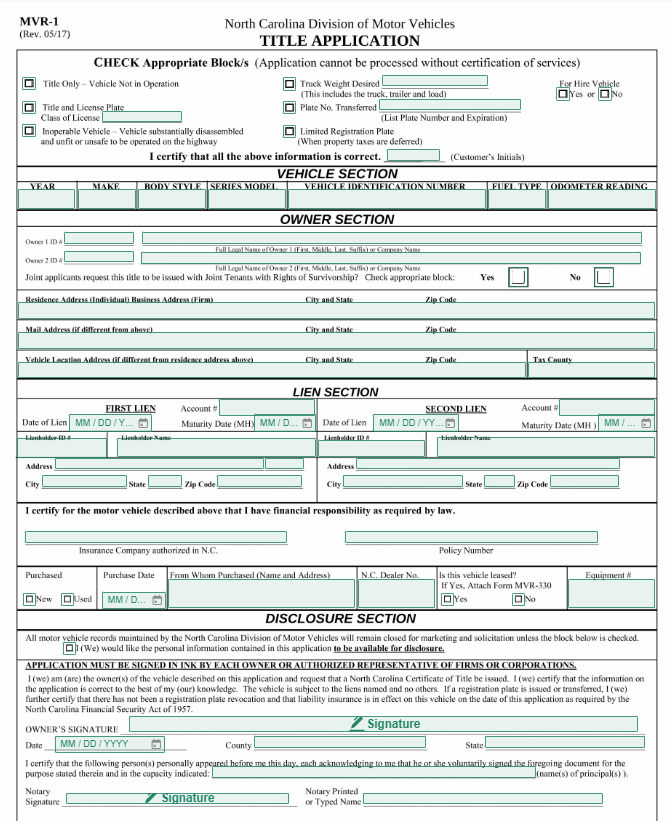Bill of Sale Form NC- North Carolina
Whether you're a private seller, buyer, or a business entity, understanding and correctly filling out the North Carolina- Bill of Sale form NC is essential for legal compliance. To download the North Carolina Bill of Sale form for free, click the button provided below. This document is vital for accurately recording the sale and transfer of ownership of property, and it assists in adhering to state regulations.
Save time, avoid headaches, and ensure compliance effortlessly with current version of Bill of Sale Form NC- North Carolina. With our streamlined process, you'll have your form in hand within moments, giving you the peace of mind to focus on what truly matters – your business.

Understanding the Form
Stay Compliant, Stay Secure: Secure Your Bill of Sale Form NC Today
Are you tired of endless paperwork and bureaucracy when it comes to forms like this?It's frustrating and time-consuming, isn't it? Spending precious hours navigating through confusing websites, waiting in long queues, or worse, risking penalties for non-compliance.But what if there was a way to bypass all that hassle? Imagine having your downloadable North Carolina Bill of Sale form at your fingertips, ready to download instantly with just a click.The North Carolina Bill of Sale Form 2024, updated for the year 2024, serves as a legal document to document the transfer of a wide range of property types - from vehicles and boats to personal belongings such as furniture or electronics - from a seller to a buyer. This form is essential for both parties as it not only offers proof of the transfer of ownership but also outlines the condition and specific details about the item sold.How to Fill Out a Bill of Sale Form NC
Form Bill of Sale Form NC- North Carolina Instructions
Filling out a Bill of Sale form in North Carolina (NC) is an important step in the process of buying or selling a vehicle, boat, or other large items. This document serves as a legal record of the transaction and provides proof of transfer of ownership. Here's a detailed guide on how to fill out a Bill of Sale form for North Carolina, specifically for users of Bluenotary, where the form can be downloaded directly.- Step 1: Download the Form
- Step 2: Gather the Required Information
- Step 3: Fill Out the Form
- Step 4: Additional Steps
- Odometer Disclosure Statement: For vehicle sales in North Carolina, an odometer disclosure statement is often required. Check if this needs to be included with your Bill of Sale.
- Notarization: In some cases, North Carolina may require the Bill of Sale to be notarized. If so, do not sign the form until you are in the presence of a notary public.
- Tips for Filling Out the Bill of Sale Form
- Accuracy is Key: Ensure all information is accurate and matches any official documents related to the item being sold.
- Keep Copies: Both the buyer and seller should keep copies of the completed Bill of Sale for their records.
- Verify Requirements: Check with local North Carolina DMV or relevant authorities to confirm if there are additional requirements or forms needed to complete the sale.
- Consult a Professional: If you have any doubts or questions about the process, consider consulting a legal professional.
Frequently Asked Questions
The North Carolina Bill of Sale form is a legal document that records the transfer of ownership of personal property, such as vehicles, boats, firearms, or other items, from a seller to a buyer in the state of North Carolina. It acts as proof of the transaction and provides detailed information about the item sold and the terms of the sale.
The North Carolina Bill of Sale form is primarily used to document the sale and purchase of personal property within North Carolina. It serves to protect both the buyer and the seller by offering a written record of the transaction, which includes details like the description of the item sold, the sale price, and the date of the sale. This form may also be necessary for registration and tax purposes, particularly for vehicles and boats.
You can obtain the North Carolina Bill of Sale form for free from reputable sources such as the North Carolina Division of Motor Vehicles (DMV) website, legal document websites, or our website Blue Notary. It is crucial to ensure that the form meets North Carolina state requirements.
Individuals or entities involved in the sale and purchase of personal property within North Carolina are required to fill out a North Carolina Bill of Sale form. This includes private sellers and buyers of vehicles, boats, firearms, and other personal items. The form is an essential document for the buyer to establish ownership and for the seller to keep a record of the sale.


